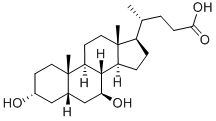Ursodeoxycholic Acid: History and Clinical Applications in Cancer Prevention
Jul 23,2024
General Description
Ursodeoxycholic acid has a rich history dating back to its discovery in the early 20th century and subsequent therapeutic advancements in liver tonics and gallstone treatment. Over time, Ursodeoxycholic acid's medical applications expanded, leading to its approval for primary biliary cirrhosis and recognition for its anticancer potential. In cancer prevention, Ursodeoxycholic acid demonstrates cytoprotective properties against colon carcinogenesis by modulating cellular pathways, inhibiting apoptosis induced by deoxycholic acid, and influencing signaling pathways such as the EGFR/ERK pathway. Its distinct effects in contrast to DCA highlight its role in regulating cell growth and apoptosis, positioning Ursodeoxycholic acid as a promising agent in cancer prevention strategies.
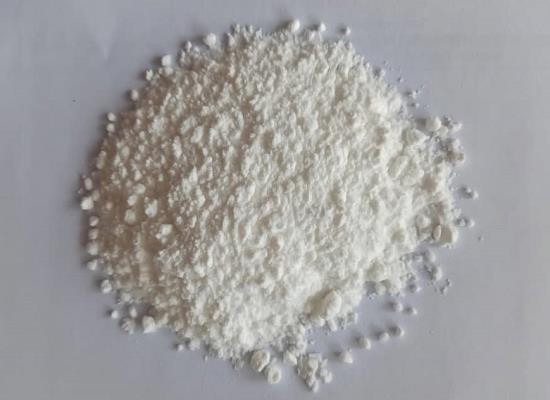
Figure 1. Ursodeoxycholic acid
History
Discovery and Naming
The history of Ursodeoxycholic acid dates back to the early 20th century when Olof Hammarsten isolated a new bile acid from a polar bear and named it "ursocholeinsäure." In 1927, Masato Shoda crystallized this bile acid from a black bear's bile and renamed it "Ursodesoxycholsäure." The chemical structure was elucidated in 1936, and the first total synthesis of Ursodeoxycholic acid was achieved in 1954. Jan Sjövall identified Ursodeoxycholic acid as a minor component of human bile in 1959, marking a crucial milestone in its discovery. 1
Therapeutic Applications and Medical Advancements
Since the 1950s, Ursodeoxycholic acid has been marketed as a liver tonic by Tokyo Tanabe based on the traditional healing properties of bear bile. In the 1960s and 1970s, human trials commenced, leading to the use of Ursodeoxycholic acid for gallstone dissolution. By the 1980s, the drug was approved for market in France and the EU for gallstone treatment. Significant progress was made in the 1980s and 1990s, with clinical studies demonstrating the efficacy of Ursodeoxycholic acid in primary biliary cirrhosis treatment. The US FDA approved Ursodeoxycholic acid for this indication in 1998. Subsequent research has highlighted the anticancer potential of Ursodeoxycholic acid, particularly in inhibiting tumor cell growth. Despite its roots in bear bile, Ursodeoxycholic acid's medical benefits extend beyond its origin, showing promise in liver protection and cancer prevention. 1
Clinical Applications in Cancer Prevention
Exploring the Role in Cancer Prevention
Ursodeoxycholic acid has garnered attention for its potential in preventing colon carcinogenesis. Studies have shown that Ursodeoxycholic acid, along with its taurine-conjugated form TUrsodeoxycholic acid, demonstrates cytoprotective properties that can impede colon cancer development in humans. Retrospective analyses have pointed towards a reduced risk of colitis-associated cancer in patients with primary sclerosing cholangitis (PSC) and ulcerative colitis following Ursodeoxycholic acid treatment. Furthermore, Ursodeoxycholic acid has exhibited a significant reduction in the risk of advanced adenomas in men, with implications of gut microbiome modulation playing a potential role in this chemopreventive effect. 2
Cellular Mechanisms in Cancer Prevention
At the cellular level, Ursodeoxycholic acid showcases a dual role as an apoptosis inhibitor and promoter in different cellular environments. It has been observed to protect against apoptosis induced by deoxycholic acid (DCA) in various cancer cells, including those from the esophagus, colon, and liver. The protective effects of Ursodeoxycholic acid involve modulation of signaling pathways such as the EGFR/ERK pathway, leading to the degradation of proteins like c-Myc and subsequent regulation of cell cycle regulators. Additionally, Ursodeoxycholic acid influences factors like ADAM17 substrates and inhibits inflammatory transcription factors, thereby preventing DNA damage and NFκB activation associated with carcinogenesis. 2
Distinctive Signaling Pathways in Oncogenesis
The contrasting effects of DCA and Ursodeoxycholic acid on oncogenic signaling pathways play a pivotal role in their divergent impacts on colon cancer progression. While DCA activates MAPK signaling and promotes oncogenic markers, Ursodeoxycholic acid demonstrates negative regulation of the EGFR-MAPK pathway, exerting anti-apoptotic effects and fostering epithelial wound healing. The unique signaling patterns of DCA and Ursodeoxycholic acid underscore their differential roles in modulating cell growth and apoptosis, shedding light on the intricate mechanisms through which Ursodeoxycholic acid may serve as a valuable agent in cancer prevention strategies. 2
Reference
1. Goossens JF, Bailly C. Ursodeoxycholic acid and cancer: From chemoprevention to chemotherapy. Pharmacol Ther. 2019; 203: 107396.
2. He Q, Wu J, Ke J, et al. Therapeutic role of ursodeoxycholic acid in colitis-associated cancer via gut microbiota modulation. Mol Ther. 2023; 31(2): 585-598.
- Related articles
- Related Qustion
- Preparation method and application of ursodeoxycholic acid Apr 22, 2022
This article describes a background overview and preparation and use of Ursodeoxycholic acid
Vinyltrimethoxysilane enhances polymers with flame retardancy and biomimetic apatite formation, despite health risks requiring careful handling.....
Jul 23,2024APIThe ethylene biosynthesis pathway is relatively simple, occurring via only two committed enzymatic reactions.....
Jul 23,2024Organic ChemistryUrsodeoxycholic acid
128-13-2You may like
Ursodeoxycholic acid manufacturers
- Ursodeoxycholic Acid
-
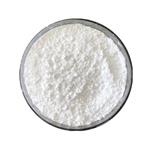
- $0.00 / 1Kg/Bag
- 2024-09-10
- CAS:128-13-2
- Min. Order: 1Kg/Bag
- Purity: 0.99
- Supply Ability: 20 tons
- Ursodeoxycholic acid
-
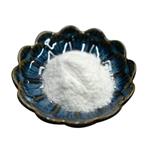
- $980.00/ kg
- 2024-09-10
- CAS:128-13-2
- Min. Order: 1kg
- Purity: 99%
- Supply Ability: 5000
- 12-HYDROXYSTEARIC ACID
-
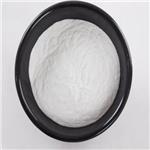
- $980.00/ kg
- 2024-09-10
- CAS:128-13-2
- Min. Order: 1kg
- Purity: 99%
- Supply Ability: 5000




